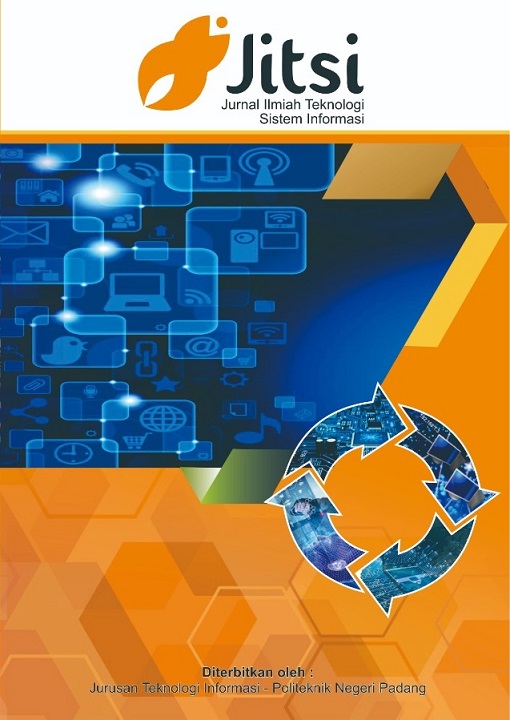Perancangan Prediksi Produksi Teh Menggunakan Metode Fuzzy Tsukamoto Berbasis Web
Isi Artikel Utama
Abstrak
Nowadays, technology is also widely applied in various fields with various needs. Innovations will continue to be developed to create even more efficient technologies for various fields. Based on data from. Various sectors, such as education, business, tourism, to the agricultural sector, widely use websites. There are various implementations or applications of technological developments in agriculture, one of which is the application of calculating an agricultural product—tea production in Kaligua in 2018 experienced ups and downs due to less stable weather conditions. Calculations in determining an agricultural product can use several calculation methods, one of which is the Tsukamoto fuzzy method. Tsukamoto's fuzzy method is an extension of monotone reasoning. In Tsukamoto's method, every consequence has a rule in the form of IF-THEN that must be represented in a fuzzy set with a monotone arrangement function. So this requires a system that can produce predictions in tea production in Kaligua tea plantations to meet market needs. The solution offered is a production prediction system in Kaligua plantations using the Tsukamoto fuzzy method. The prediction results obtained in this study were a 36% increase in tea sales production.
Rincian Artikel
Referensi
[2] Y. I. Pratiwi, M. Ali, M. I. Setiawan, H. Budiyanto, and B. S. Sucahyo, “Urban Agriculture Technology to Support Urban Tourism,” Revital. Prof. Assoc. Sci. Knowl. HRD High. Educ., 2016.
[3] F. Nikmah, “Strategi Pemasaran Dalam Meningkatkan Volume Penjualan(Studi Kasus Pabrik Teh Kaligua Pandansari Paguyangan),” Institut Agama Islam Negeri Purwokerto, 2018.
[4] M. Muin, “Pengaruh Faktor Produksi Terhadap Hasil Produksi Merica Di Desa Era Baru Kecamatan Tellulimpoe Kabupaten Sinjai,” J. Econ., vol. 5, no. 2, pp. 203–214, 2017, [Online]. Available: https://ojs.unm.ac.id/economix/article/view/5374/3114
[5] D. Aldo, “Identifikasi Jumlah Produksi Produk dengan Metode Fuzzy Tsukamoto Berbasis Web,” J. Sist. Inf. dan Manaj., vol. 7, no. 1, 2019, [Online]. Available: https://ojs.unm.ac.id/economix/article/view/5374/3114
[6] T. S. M. Lestari and S. M. Jaya, “Perancangan Sistem Informasi Berbasis Web Melalui Whatsapp Gateway Studi Kasus Sekolah Luar Biasa-Bc Nurani,” J. Teknol. Inf. dan Komun., vol. 11, no. 1, pp. 38–44, 2021, doi: 10.56244/fiki.v11i1.421.
[7] A. C. Rompis and R. F. Aji, “Perbandingan Performa Kinerja Node.js, PHP, dan Python dalam Aplikasi REST,” CogITo Smart J., vol. 4, no. 1, pp. 171–187, 2018, doi: 10.31154/cogito.v4i1.92.171-187.
[8] I. Budikusuma and E. S. Susanto, “Pengembangan Aplikasi Toefl Practice Exam Berbasis Website Pada Universitas Teknologi Sumbawa,” JATI (Jurnal Mhs. Tek. Inform., vol. 6, no. 1, pp. 75–78, 2022, doi: 10.36040/jati.v6i1.4446.
[9] A. Zamsuri, R. Hardianto, A. Armada, and K. Anggraini, “Analisa Tingkat Kepuasan Masyarakat Terhadap Pelayanan Publik di Polsek Kecamatan Tembilahan,” Zo. J. Sist. Inf., vol. 3, no. 2, pp. 143–156, 2021.
[10] S. Sakinah, Y. Widiastiwi, and A. Zaidiah, “Implementasi Metode Fuzzy Sugeno Pada Proses Penyiangan Koleksi Buku di Perpustakaan Universitas Indonesia,” in Seminar Nasional Mahasiswa Bidang Ilmu Komputer dan Aplikasinya, 2020, vol. 1, no. 2, pp. 622–636.
[11] Caroline, R. Thayeb, Hermawati, W. D. Harsanto, S. Dwijayanti, and B. Y. Suprapto, “Pemanfaatan Logika Fuzzy sebagai Pengendali Steering pada Hardware In the Loop Mobil Listrik Otomatis,” J. Ecotipe (Electronic, Control. Telecommun. Information, Power Eng., vol. 8, no. 1, pp. 39–46, 2021, doi: 10.33019/jurnalecotipe.v8i1.2121.
[12] A. K. Nisa, M. Abdy, and A. Zaki, “Penerapan Fuzzy Logic untuk Menentukan Minuman Susu Kemasan Terbaik dalam Pengoptimalan Gizi,” J. Math. Comput. Stat., vol. 3, no. 1, p. 51, 2020, doi: 10.35580/jmathcos.v3i1.19902.
[13] D. A. Damanik, A. Harahap, and E. A. Pailis, “Analisis Faktor-Faktor Yang Mempengaruhi Produksi Teh (Studi Kasus: PTPN IV Bahbutong, Kec. Sidamanik, Kab. Simalungun Sumatera Utara),” J. Fekon, vol. 2, no. 2, pp. 1–15, 2015.
[14] A. Masnur and M. K. Anam, “Implementasi Logika Fuzzy Dengan Inferensi Tsukamoto Pada Deteksi Kegagalan Sistem Transfer Cake Breaker Conveyor (Cbc),” Rabit J. Teknol. dan Sist. Inf. Univrab, vol. 4, no. 1, pp. 1–7, 2019, doi: 10.36341/rabit.v4i1.596.
[15] G. Twesigye, A. Ngenzi, and E. Ndashimye, “An Embedded Fuzzy Logic Based Smart Street Lighting System,” in 2022 IEEE Nigeria 4th International Conference on Disruptive Technologies for Sustainable Development (NIGERCON), Apr. 2022, pp. 1–5. doi: 10.1109/NIGERCON54645.2022.9803089.
[16] B. Shunmugapriya and B. Paramasivan, “Fuzzy Based Relay Node Selection for Achieving Efficient Energy and Reliability in Wireless Body Area Network,” Wirel. Pers. Commun., vol. 122, no. 3, pp. 2723–2743, Feb. 2022, doi: 10.1007/s11277-021-09027-5.
[17] Z. Liu, A. Mohammadzadeh, H. Turabieh, M. Mafarja, S. S. Band, and A. Mosavi, “A New Online Learned Interval Type-3 Fuzzy Control System for Solar Energy Management Systems,” IEEE Access, vol. 9, pp. 10498–10508, 2021, doi: 10.1109/ACCESS.2021.3049301.
[18] S. A. Andayani et al., “Prediction model for agro-tourism development using adaptive neuro-fuzzy inference system method,” Open Agric., vol. 7, no. 1, pp. 644–655, Aug. 2022, doi: 10.1515/opag-2022-0086.
[19] A. B. Burhan, “Pemanfaatan Teknologi Informasi dan Komunikasi untuk Pengembangan Ekonomi Pertanian dan Pengentasan Kemiskinan,” J. Komun. Pembang., vol. 16, no. 2, pp. 233–247, 2018, doi: 10.46937/16201826338.
[20]Humaira, Y. Sonatha, C. Prabowo, H. Amnur, and R. Afyenni, “Comparative study of type-1 and type-2 fuzzy system in decision support system,” Indones. J. Electr. Eng. Informatics, vol. 6, no. 3, pp. 323–332, 2018, doi: 10.11591/ijeei.v6i3.391
[21] H. Haryanto and S. Astuti, “Sistem Pakar Berbasis Logika Fuzzy Tsukamoto Untuk Mendiagnosa Hama Dan Penyakit Tanaman Tebu,” J. Sist. Inf. dan Teknol. Inf., pp. 1–9, 2017.
[22] Shania, A. S. R. Ansori, and A. Dinimaharawati, “Perancangan Sistem Penentu Warna Pakaian Menggunakan Metode Fuzzy Sugeno Berbasis Android,” in e-Proceeding of Engineering, 2020, vol. 7, no. 2, pp. 4880–4890. [Online]. Available: https://openlibrarypublications.telkomuniversity.ac.id/index.php/engineering/article/view/12402%0Ahttps://openlibrarypublications.telkomuniversity.ac.id/index.php/engineering/article/viewFile/12402/12179
[23] S. A. Budi, S. Muchsin, and R. W. Sekarsari, “AGROWISATA PETIK JERUK ( Studi Kasus di Desa Selorejo Kecamatan Dau Kabupaten Malang ) Program Studi Ilmu Administrasi Publik , Fakultas Ilmu Admiministrasi , Universitas Islam Pendahuluan,” J. Respon Publik, vol. 14, no. 5, pp. 48–54, 2020.

